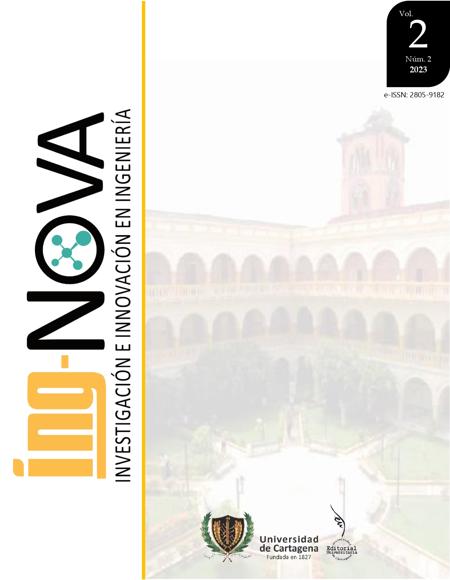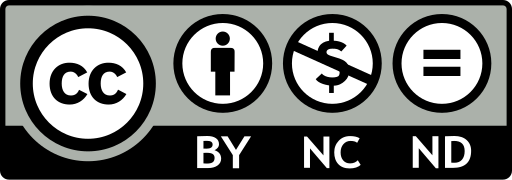Estudio Termoquímico Asistido por Computadora de los Polifenoles presentes en la Fresa
Thermochemical Computer Assisted Study of Polyphenols Presented in Strawberry
Contenido principal del artículo
Resumen
Las fresas son un alimento importante en Latinoamérica debido a sus componentes químicos, puesto que son una considerable fuente de calorías y polifenoles. Estos elementos son útiles por su capacidad antioxidante y otras propiedades beneficiosas para la salud. Sin embargo, la presión y la temperatura pueden llegar a afectar la integridad molecular de estos componentes, por lo tanto, en el proceso de producción de diferentes productos basados en fresas, se requiere estudiar las propiedades termoquímicas de los diferentes polifenoles presentes en esta fruta. Para ello, se extrajeron datos de las principales familias de polifenoles, antocianinas, flavanoles, flavonoles, ácidos hidroxibenzoicos y ácidos hidroxicinámicos, y de cada familia se extrajeron los componentes con mayor presencia en la fresa. Para realizar el análisis termoquímico, se utilizaron las herramientas Aspen PropertiesV11® y Aspen PlusV11® , donde se simulo una mezcla de diferentes polifenoles en una base de agua que simula la composición de 100 g de fresa. En primer lugar, se observó el comportamiento termoquímico al aumentar la temperatura a presión constante las propiedades termoquímicas de los compontes puros. Luego, se realizó la segunda simulación donde la mezcla de los componentes en una fresa., como cianidina, pelargonidina, catequina (+)-, epicatequina (-), quercetina 3-O-glucuronida, ácido elágico, ácido cinámico y cafeoil glucosa fue evaluada a diferentes temperaturas, pero a presión constante. Se obtuvo que los componentes en su estado sólido tienen puntos de cambio de fase bastante altos en comparación con el agua, y sus puntos críticos, como el volumen crítico, la temperatura y la presión críticas, son el doble que los del agua (56,1234 cm³/mol, 374,228°C, 220,424 bar). Con lo anterior, se discuten las posibilidades industriales de estos elementos y su extracción por medios convencionales. Se validó el resultado con la presión de vapor obtenida para el ácido cinámico y se comparó con la del NIST, obteniendo un margen de error del 1%.
Palabras clave
Descargas
Datos de publicación
Perfil evaluadores/as N/D
Declaraciones de autoría
Indexado en
- Sociedad académica
- Universidad de Cartagena
- Editorial
- Universidad de Cartagena
Detalles del artículo
Referencias (VER)
N. Evans, “Strawberry fields forever? Conflict over neo-productivist Spanish polytunnel technology in British agriculture,” Land use policy, vol. 35, pp. 61–72, Nov. 2013, doi: 10.1016/j.landusepol.2013.04.019. DOI: https://doi.org/10.1016/j.landusepol.2013.04.019
A. Santiago, L. Solaque, and A. Velasco, “Strawberry disease detection in precision agriculture,” in Proceedings of the 18th International Conference on Informatics in Control, Automation and Robotics, ICINCO 2021, SciTePress, 2021, pp. 537–544. doi: 10.5220/0010616405370544. DOI: https://doi.org/10.5220/0010616400002994
J. C. Espín, M. Ochoa, J. Tudela, and F. García-Cánovas, “Monophenolase activity of strawberry polyphenol oxidase,” Phytochemistry, vol. 45, no. 4, pp. 667–670, Jun. 1997, doi: 10.1016/S0031-9422(97)00052-6. DOI: https://doi.org/10.1016/S0031-9422(97)00052-6
T. Y. Forbes-Hernandez et al., “The Healthy Effects of Strawberry Polyphenols: Which Strategy behind Antioxidant Capacity?,” Crit Rev Food Sci Nutr, vol. 56, pp. S46–S59, Jul. 2016, doi: 10.1080/10408398.2015.1051919. DOI: https://doi.org/10.1080/10408398.2015.1051919
I. Hanuka-Katz, Z. Okun, G. Parvari, and A. Shpigelman, “Structure dependent stability and antioxidant capacity of strawberry polyphenols in the presence of canola protein,” Food Chem, vol. 385, 2022, doi: 10.1016/j.foodchem.2022.132630. DOI: https://doi.org/10.1016/j.foodchem.2022.132630
R. Singh, R. Kumar, R. Venkateshappa, B. Mann, and S. K. Tomar, “Studies on physicochemical and antioxidant properties of strawberry polyphenol extract-fortified stirred Dahi,” Int J Dairy Technol, vol. 66, no. 1, pp. 103–108, Feb. 2013, doi: 10.1111/j.1471-0307.2012.00874.x. DOI: https://doi.org/10.1111/j.1471-0307.2012.00874.x
J. Leon-Pulido et al., “Energy Study of Reactive-HIDiC Simulation for Ethyl Acetate Synthesis from Acetic Acid,” Chem Eng Trans, vol. 58, pp. 547–552, Jun. 2017, doi: 10.3303/CET1758092.
J. Leon-Pulido, I. D. Santiago Cespedes, A. D. Gonzalez-Delgado, J. Becerra Navas, V. O. Cárdenas Concha, and J. R. Nunhez, “Estudo Termoquímico na Produção de Aditivo de Gasolina Tert-Amyl-Methyl-Ether (TAME),” Revista ION, vol. 32, no. 1, pp. 87–95, 2020, doi: 10.18273/revion.v32n1-2019008. DOI: https://doi.org/10.18273/revion.v32n1-2019008
U.S. Department of Agriculture. Agricultural Research Service, “FoodData Central,” FoodData Central, 2019. https://fdc.nal.usda.gov/fdc-app.html#/food-details/1102710/nutrients (accessed Feb. 08, 2023).
K. Aaby, D. Ekeberg, and G. Skrede, “Characterization of phenolic compounds in strawberry (Fragaria x ananassa) fruits by different HPLC detectors and contribution of individual compounds to total antioxidant capacity,” J Agric Food Chem, vol. 55, no. 11, pp. 4395–4406, May 2007, doi: 10.1021/jf0702592. DOI: https://doi.org/10.1021/jf0702592
S. Chordi, “Contenido fenólico y capacidad antioxidante de fresa mínimamente,” 2013.
A. M. Husaini and F. A. Zaki, “Strawberries: a general account.,” in Strawberry: growth, development and diseases, CABI, 2016, pp. 1–9. doi: 10.1079/9781780646633.0001. DOI: https://doi.org/10.1079/9781780646633.0001
P. N. Diouf, T. Stevanovic, and A. Cloutier, “Antioxidant properties and polyphenol contents of trembling aspen bark extracts,” Wood Sci Technol, vol. 43, no. 5–6, pp. 457–470, Aug. 2009, doi: 10.1007/s00226-009-0240-y. DOI: https://doi.org/10.1007/s00226-009-0240-y
A. Hazafa, K. U. Rehman, N. Jahan, and Z. Jabeen, “The Role of Polyphenol (Flavonoids) Compounds in the Treatment of Cancer Cells,” Nutrition and Cancer, vol. 72, no. 3. Nutr Cancer, pp. 386–397, Apr. 02, 2020. doi: 10.1080/01635581.2019.1637006. DOI: https://doi.org/10.1080/01635581.2019.1637006
P. Minutti-López Sierra, T. Gallardo-Velázquez, G. Osorio-Revilla, and O. G. Meza-Márquez, “Chemical composition and antioxidant capacity in strawberry cultivars (Fragaria x ananassa Duch.) by FT-MIR spectroscopy and chemometrics,” CYTA - Journal of Food, vol. 17, no. 1, pp. 724–732, 2019, doi: 10.1080/19476337.2019.1645211.
J. Weaver et al., “Strawberry polyphenols are equally cytotoxic to tumourigenic and normal human breast and prostate cell lines,” Int J Oncol, vol. 34, no. 3, pp. 777–786, Mar. 2009, doi: 10.3892/ijo_00000203. DOI: https://doi.org/10.3892/ijo_00000203
P. Minutti-López Sierra, T. Gallardo-Velázquez, G. Osorio-Revilla, and O. G. Meza-Márquez, “Chemical composition and antioxidant capacity in strawberry cultivars (Fragaria x ananassa Duch.) by FT-MIR spectroscopy and chemometrics,” CYTA - Journal of Food, vol. 17, no. 1, pp. 724–732, Jan. 2019, doi: 10.1080/19476337.2019.1645211. DOI: https://doi.org/10.1080/19476337.2019.1645211
Phenol-Explorer, “Showing all polyphenols found in Strawberry, raw.” 2019. Accessed: Feb. 07, 2023. [Online]. Available: http://phenol-explorer.eu/contents/food/69
J. Leon-Pulido, W. S. Fajardo-Moreno, M. J. Arias-Tapia, A. D. Gonzalez-Delgado, V. O. Cárdenas-Concha, and J. R. Nunhez, “Estudo termoquímico assistido por computador para a produção de biodiesel,” Revista ION, vol. 32, no. 2, pp. 77–84, Dec. 2019, doi: 10.18273/revion.v32n2-2019008. DOI: https://doi.org/10.18273/revion.v32n2-2019008
S. I. Sandler, Using Aspen Plus in Thermodynamics Instruction: A Step-by-Step Guide. 2015. Accessed: Feb. 13, 2023. [Online]. Available: https://www.wiley.com/en-us/Using+Aspen+Plus+in+Thermodynamics+Instruction%3A+A+Step+by+Step+Guide-p-9781118996911
H. Zhang et al., “Structure-solubility relationships and thermodynamic aspects of solubility of some flavonoids in the solvents modeling biological media,” J Mol Liq, vol. 225, pp. 439–445, Jan. 2017, doi: 10.1016/j.molliq.2016.11.036. DOI: https://doi.org/10.1016/j.molliq.2016.11.036
O. Redlich and J. N. S. Kwong, “On the thermodynamics of solutions. V. An equation of state. Fugacities of gaseous solutions,” Chem Rev, vol. 44, no. 1, pp. 233–244, Feb. 1949, doi: 10.1021/cr60137a013. DOI: https://doi.org/10.1021/cr60137a013
Z. Song et al., “Large-scale preparation of five polar polyphenols including three isomers from Phyllanthus emblica Linn. by preparative high-speed counter-current chromatography,” J Sep Sci, vol. 46, no. 2, p. 2200748, Jan. 2023, doi: 10.1002/jssc.202200748. DOI: https://doi.org/10.1002/jssc.202200748
G. L. A. Forero and J. J. A. Velásquez, “A generalized cubic equation of state for non-polar and polar substances,” Fluid Phase Equilib, vol. 418, pp. 74–87, Jun. 2016, doi: 10.1016/j.fluid.2015.09.045. DOI: https://doi.org/10.1016/j.fluid.2015.09.045
F. Edi-Soetaredjo, S. Ismadji, and Y. H. Ju, “Measurement and modeling of epicatechin solubility in supercritical carbon dioxide fluid,” Fluid Phase Equilib, vol. 340, pp. 7–10, Feb. 2013, doi: 10.1016/j.fluid.2012.12.005. DOI: https://doi.org/10.1016/j.fluid.2012.12.005
Z. Nasri and H. Binous, “Applications of the Soave-Redlich-Kwong equation of state using mathematica®,” Journal of Chemical Engineering of Japan, vol. 40, no. 6, pp. 534–538, Jun. 2007, doi: 10.1252/jcej.40.534. DOI: https://doi.org/10.1252/jcej.40.534
F. Mollaamin, “Phenolic Compounds in Black Grape by the Electronic and Thermochemical Studies,” vol. 13, no. 2, p. 162, 2023, doi: 10.33263/BRIAC132.162. DOI: https://doi.org/10.33263/BRIAC132.162



 PDF
PDF
 FLIP
FLIP






